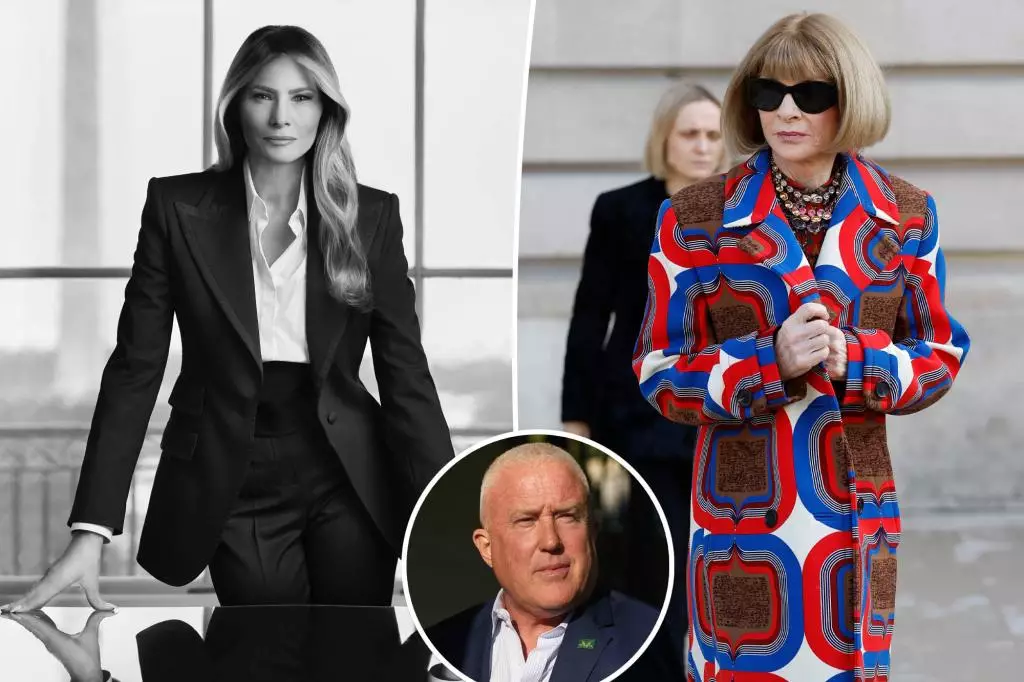The world of fashion often collides with politics, producing a unique stratum of celebrity and cultural significance. The recent contention between Melania Trump and Vogue, particularly under the purview of Anna Wintour, epitomizes this clash. Friends and supporters of Melania have rallied against Vogue’s harsh criticism of her fashion choices as the First Lady, highlighting the resilience and loyalty behind her public persona. This article delves into the nuances of this controversy, examining its implications on the intersection of fashion, politics, and media representation.
The Backlash from Melania’s Supporters
The op-ed published by Vogue insinuated that Melania’s portrayal in her official White House photo was more akin to a role in a reality TV show than a representation of her duties as the First Lady. Such biting commentary has prompted backlash from individuals close to her. Bill White, a staunch supporter of Melania and a proposed ambassadorial nominee, has taken to social media and public platforms to denounce Vogue, referring to it as “Condé Nasty.” This comment underscores a collective sentiment among Melania’s allies, urging fellow Americans who align with pro-Trump sentiments to boycott the publication.
White further praised Melania for her elegance, intelligence, and multilingual prowess, asserting that she embodies both beauty and substance unlike any First Lady before her. However, one must question whether such ardent praise is genuinely reflective of her public persona or a constructed narrative meant to shield her from ongoing media scrutiny.
Vogue’s critique did not merely end at disapproval of Melania’s appearance; it positioned her within a broader narrative of celebrity culture, where the aesthetics of the First Lady are scrutinized beyond the typical parameters of political discourse. By comparing Melania to a “freelance magician,” the publication suggested that her contributions and essence as a public figure are ephemeral—more about spectacle than impact. Such metaphors can profoundly shape public perception, reinforcing pre-existing biases against Melania Trump and the Trump administration.
It’s critical to study how this portrayal aligns with or diverges from the representations of other First Ladies. Historically, fashion magazines have often celebrated First Ladies for their style and influence. Yet, Melania, who has evidently faced a barrage from various media outlets, appears to be pigeonholed within negative frameworks that emphasize her perceived lack of authenticity or depth.
Intriguingly, Melania Trump herself has expressed indifference towards being featured on the cover of Vogue, claiming that she has more pressing priorities. Her statements refer back to her pre-existing stature in fashion and suggest a level of autonomy from media validation that is uncommon in today’s celebrity-obsessed culture. This defiance could be interpreted either as confidence in her role or as a strategic move designed to distance herself from the high expectations often placed upon First Ladies.
Supporters within the MAGA faction have echoed sentiments of dismissal, implying that Melania has outgrown such superficial engagements with the fashion world. They argue she has been consistently overlooked by designers and major fashion platforms, framing her as a victim of an industry that perpetuates elitism.
As the controversy unfolds, it raises broader questions about the relationship between fashion and politics. Fashion is not merely about aesthetic choices; it is imbued with socio-political messages that reflect the values and beliefs of the time. Melania’s choice to sidestep Vogue could signify a recalibration of priorities that might resonate with broader political bases.
Moreover, the delineation between public image and personal identity becomes blurred in these circumstances. While supporters rally for Melania, claiming she is the most beautiful First Lady, critics use such endorsements to frame her as merely a figure of glamour with little substance. This dynamic showcases the troubling dichotomy between how women in positions of power are often categorized—either as symbols of elite beauty or target subjects for derision.
The ongoing scuffle between Melania Trump and Vogue encapsulates the complexities and tensions that pervade the intersection of media, fashion, and politics. As the narrative continues to unfold, it’s essential to scrutinize the authenticity of public personas and the roles of supporters and critics alike. Ultimately, these discourses shape not just individual identities but the broader cultural fabric that influences perspectives on women’s roles and representation in politics. As each side takes its stand, the clash will remain a poignant testimony to the ongoing socio-political dialogue in contemporary America.

